Related Research Articles

The South Alberta Light Horse (SALH) is a Canadian Army armoured reconnaissance regiment of the Canadian Army Reserve. It traces its complicated lineage to the Rocky Mountain Rangers, and claims its direct ancestry to the 15th Light Horse, along with various other Alberta based cavalry units. The "Light Horse" designation comes from its light cavalry and mounted infantry origins.
The Canadian Expeditionary Force (CEF) was the expeditionary field force of Canada during the First World War. It was formed following Britain’s declaration of war on the German Empire on 15 August 1914, with an initial strength of one infantry division. The division subsequently fought at Ypres on the Western Front, with a newly raised second division reinforcing the committed units to form the Canadian Corps. The CEF and corps was eventually expanded to four infantry divisions, which were all committed to the fighting in France and Belgium along the Western Front. A fifth division was partially raised in 1917, but was broken up in 1918 and used as reinforcements following heavy casualties.

Edward Donald Bellew,, Captain of the 7th Bn British Columbia Regiment, CEF was a Canadian recipient of the Victoria Cross, the highest and most prestigious award for gallantry in the face of the enemy that can be awarded to British and Commonwealth forces.
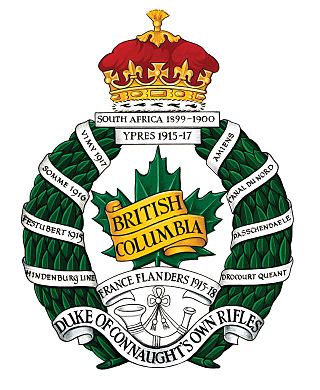
The British Columbia Regiment (Duke of Connaught's Own) is a Primary Reserve armoured reconnaissance (recce) regiment of the Canadian Army; the regiment is subordinate to 39 Canadian Brigade Group of the 3rd Canadian Division. Established in 1883, it is the oldest military unit in Vancouver, British Columbia, Canada. It parades at the Beatty Street Drill Hall at the corner of Dunsmuir and Beatty in Downtown Vancouver. The regiment has been variously designated as garrison artillery, rifles, infantry, and armoured, but has been reconnaissance since 1965. It has received 41 battle honours in its history, and has been a unit of the Royal Canadian Armoured Corps since 1942.
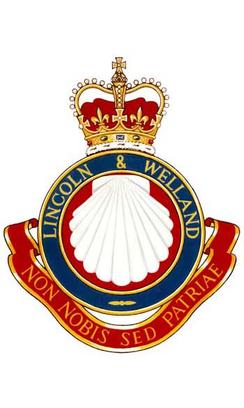
The Lincoln and Welland Regiment is a Primary Reserve infantry regiment of the Canadian Army based in St. Catharines, Ontario.
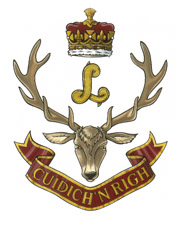
The Seaforth Highlanders of Canada is a Primary Reserve infantry regiment of the Canadian Army based in Vancouver, British Columbia. The regiment is subordinate to 39 Canadian Brigade Group, 3rd Canadian Division. Based at the Seaforth Armoury on Burrard Street in Vancouver, the regiment serves in both times of war and civil emergency, such as disaster relief after earthquakes or floods. It also contributes individual volunteers or "augmentees" to Canadian Forces operations around the world.
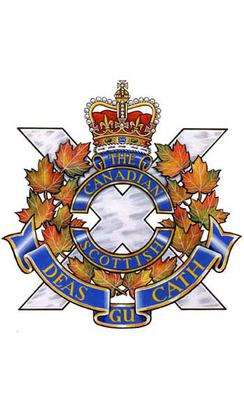
The Canadian Scottish Regiment (Princess Mary's) is a Primary Reserve infantry regiment of the Canadian Army based on Vancouver Island in British Columbia.

The 20th Battalion, CEF was a unit of the First World War Canadian Expeditionary Force.
The 121st Battalion, CEF was a unit in the Canadian Expeditionary Force during the First World War. Based in New Westminster, British Columbia, the unit was authorized on 22 December 1915 and began recruiting in that city. After sailing to England on RMS Empress of Britain in August 1916, the battalion was absorbed into the 16th Reserve Battalion on January 10, 1917. The 121st Battalion, CEF had one Officer Commanding: Lieutenant-Colonel Archibald Woodbury McLelan.
The 131st Battalion, CEF was a unit in the Canadian Expeditionary Force during the First World War. Based in New Westminster, British Columbia, the unit began recruiting in late 1915 in that city. After sailing to England in November 1916, the battalion was absorbed into the 30th Battalion, CEF on November 14, 1916. The 131st Battalion, CEF had one Officer Commanding: Lieut-Col. James Davis Taylor.
The 158th Battalion, CEF was a unit in the Canadian Expeditionary Force during the First World War. Based in Vancouver, British Columbia, the unit began recruiting in late 1915 in that city. After sailing to England in November 1916, the battalion was absorbed into the 1st Reserve Battalion on January 6, 1917. The 158th Battalion, CEF had one Officer Commanding: Lieut-Col. C. Milne.

The 199th Battalion, CEF was a unit in the Canadian Expeditionary Force (CEF) during the First World War.

The 211th Battalion, CEF was a unit in the Canadian Expeditionary Force during the First World War. Based in Vancouver, British Columbia, the unit began recruiting in early 1916 throughout British Columbia and Alberta. After sailing to England in December 1916, the battalion was transferred to the 8th Battalion, Canadian Railway Troops in March 1917. The 211th Battalion, CEF had one Officer Commanding: Lieut-Col. W. M. Sage.
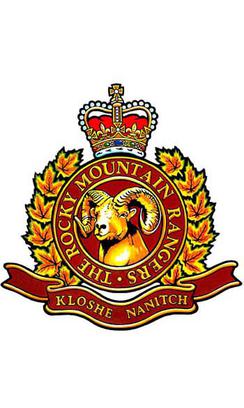
The Rocky Mountain Rangers is a Primary Reserve infantry regiment of the Canadian Army, one of only four infantry regiments in British Columbia, and the only infantry unit that recruits in Northern BC and much of the Interior. The regimental headquarters are at JR Vicars Armoury in Kamloops, with an additional rifle company in Prince George. The Rocky Mountain Rangers are part of the 3rd Canadian Division's 39 Canadian Brigade Group, the brigade responsible for Canadian Army organization in British Columbia.

The Queen's York Rangers (RCAC) is a Canadian Army Primary Reserve Royal Canadian Armoured Corps regiment based in Toronto and Aurora. The regiment is part of 4th Canadian Division's 32 Canadian Brigade Group. The regiment consists of one cavalry squadron, as well as the Headquarters and Training Squadron. The regimental family also includes The Queen's York Rangers Band (volunteer), along with two Royal Canadian Army Cadet corps and a Royal Canadian Air Cadet squadron. The unit mottos are pristinae virtutis memor – 'remembering their glories in former days' – and celer et audax – 'swift and bold'. Among its own members and those of other regiments, the unit is referred to as the Rangers. The name is abbreviated as QY Rang, and sometimes pronounced KWY-rang.

The 31st Battalion (Alberta), CEF, was an infantry battalion of the Canadian Expeditionary Force during the Great War. The battalion recruited in Alberta and was mobilized at Calgary. The battalion was authorized in November 1914 and embarked for Britain on 17 May 1915. On 18 September 1915 it disembarked in France, where it fought with the 6th Infantry Brigade, 2nd Canadian Division in France and Flanders until the end of the war. The battalion was disbanded in August 1920.
A ranger is typically either a caretaker that aids in the management of natural resources like public parks/forests or someone that works in a law enforcement or military/paramilitary role specializing in patrolling a given territory, called "ranging" or "scouting". The term most often refers to:
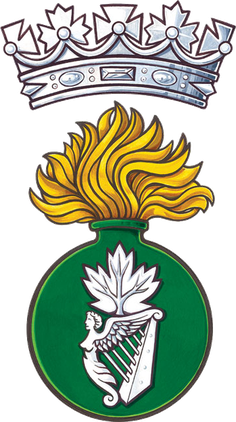
The Irish Fusiliers of Canada (The Vancouver Regiment) was an infantry regiment of the Canadian Army. It was placed on the Supplementary Order of Battle in 1965. In 2002, it was taken off the Supplementary Order of Battle and amalgamated with The British Columbia Regiment (Duke of Connaught's Own).
The 13th Canadian Infantry Brigade was a formation of the Canadian Army that served in both World Wars. During World War I, the brigade formed part of the 5th Canadian Division. However, the 13th Brigade never saw combat as the brigade along with the 5th Canadian Division was broken up to provide reinforcements to the 4 other divisions of the Canadian Corps. During the Second World War, the brigade formed part of the 6th Canadian Infantry Division serving on the west coast in the home defence role and in June 1943, the brigade took part in Operation Cottage on Kiska during the Aleutian Islands campaign.
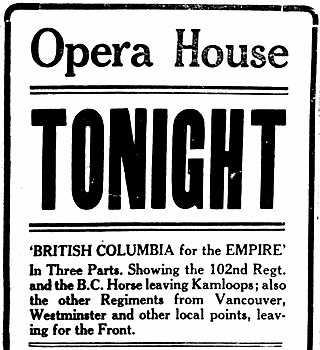
British Columbia for the Empire was a Canadian feature-length silent documentary film released in 1916 by Vancouver filmmaker Arthur D. Kean, through his company Kean's Canada Films. It was a compilation film, assembled from his short films that depicted various British Columbia battalions in training and departing for service in the First World War.
References
- Meek, John F. Over the Top! The Canadian Infantry in the First World War. Orangeville, Ont.: The Author, 1971.